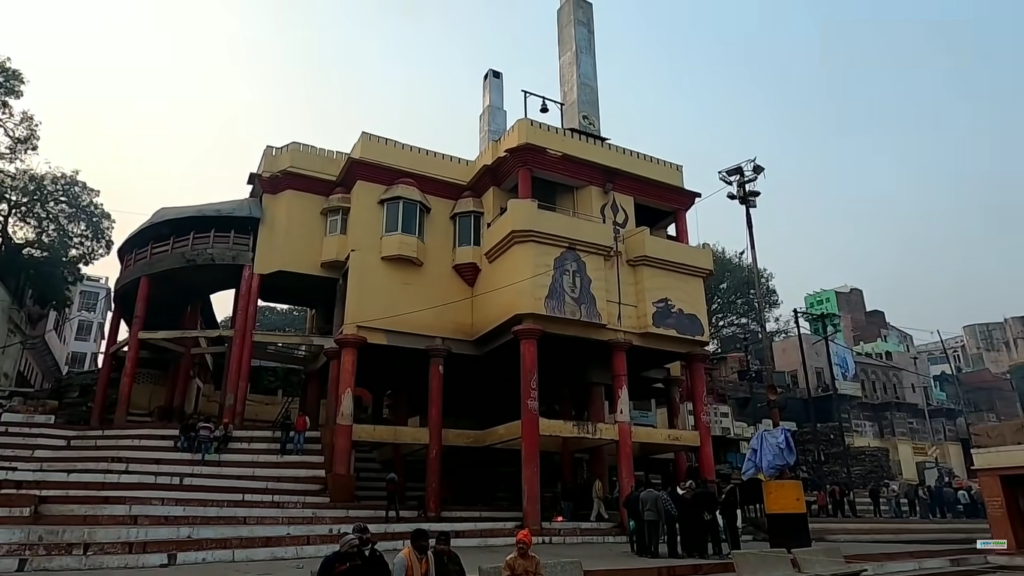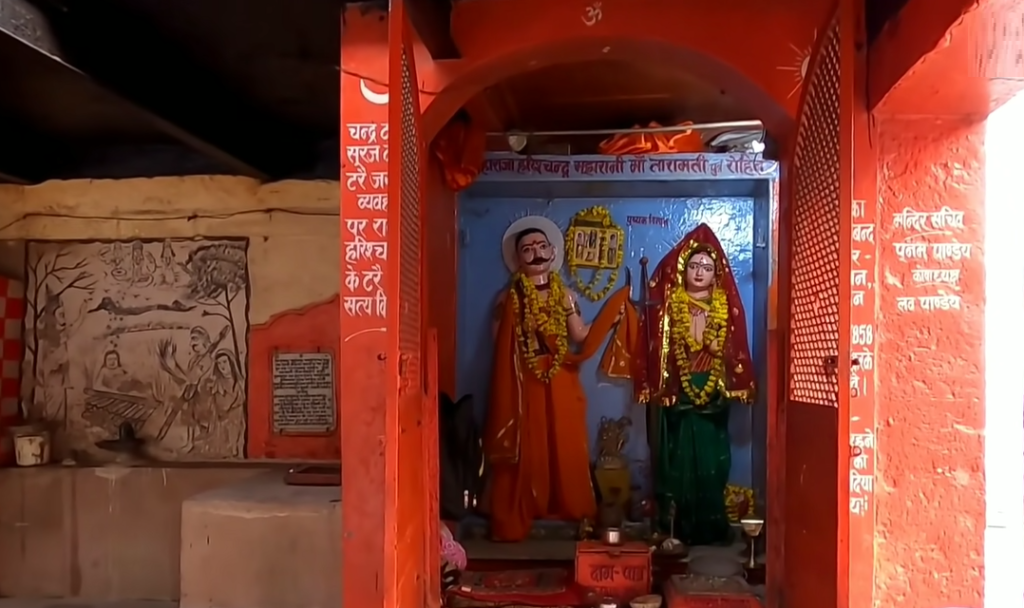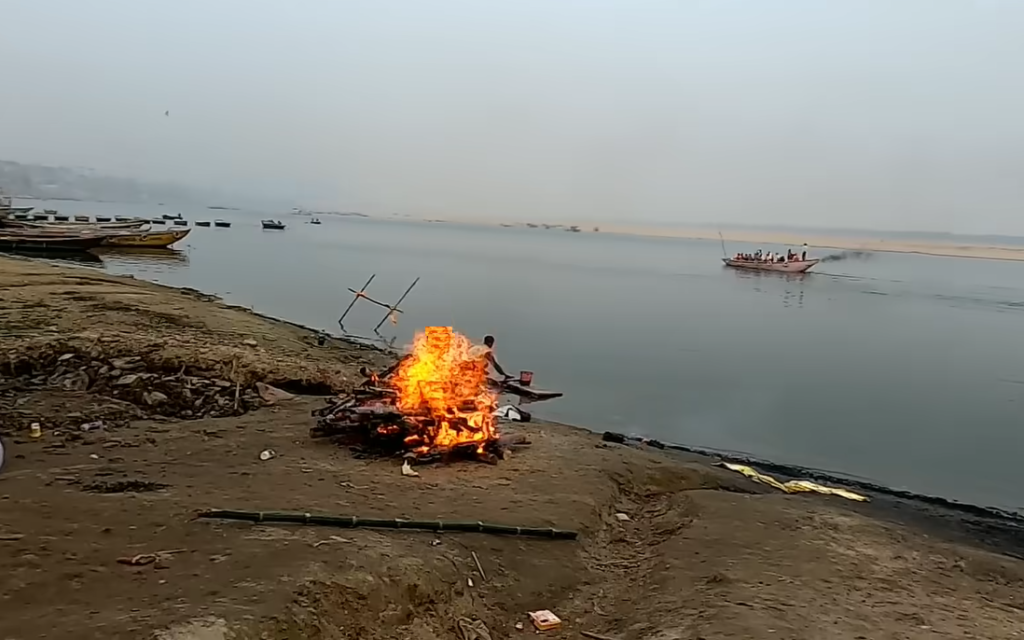One of the must-visit places in India is Varanasi. It has a unique charm that mesmerizes everyone who visits there. Located along the banks of the sacred river Ganga, it offers a glimpse into the spiritual soul of India. One can experience the spiritual force of the place, the strength of the river, and the peaceful atmosphere of this historic city. The Ghat of Varanasi is a beautiful place to explore.
A total of 84 ghats may be found throughout the city. All of Varanasi’s ghats are pleasant, but only a few of them are very important in Hindu history. Most of the ghats are used for religious ceremonies like puja, but Manikarnika and Harishchandra are only used for cremations. Situated on the bank of the Ganges River in the holy city of Varanasi, the Harishchandra Ghat is one of the most ancient and oldest settlements of the city. Adorned with spectacular ghats, and temples, Harishchandra Ghat is a must-visit destination for anyone visiting the city. There are many beautiful ghats, temples, and monuments around the Harishchandra Ghat that are worth seeing.
Symbolism of New Beginnings: Harishchandra Ghat
Varanasi has designated ghats for the practice of cremation because of its cultural significance. Many elderly people go to Varanasi to await their death. Hindus from far away bring the bodies of their loved ones who have died to this ghat to be burned. Like Manikarnika Ghat, people think that if they are burned here, they will go to heaven. Less than 2% of the people who die in India each year, or 25,000 to 30,000 bodies, are burned on the Varanasi Ghats, which is about 80 people per day on average.

This ghat is important because of its connection to King Harishchandra. Since the beginning of time, the good deeds, honor, and loyalty of King Harishchandra have been remembered by Hindus. The fact that the Brahmins of Tulsi Ghat and the “pandits” of Assi will definitely choose to be burned here shows how important its holiness is. On Holi, people use the ash from the burned pyres at Harishchandra Ghat. Lord Vishveshwar or Lord Shiva, or as known locally, Baba Vishwanath, plays Holi with ash from Raja Harishchandra Ghat, which is called “Bhasm”. Chita Bhasma Holi began in the year 2020. Before that, Holi was only celebrated at Manikarnika Ghat.
Discovering the History behind Harishchandra Ghat (Story)
The name Harishchandra Ghat comes from an interesting story. King Harishchandra, a king from Varanasi, is thought to have worked at the funeral grounds to bring about truth and justice. Where he was asked by Rishi Vishwamitra to pay him Rajsuya Dakshina (a traditional fee). The king, who was known for being kind, gave up his whole kingdom, all of his wealth, and everything else he owned.

The wise man still wasn’t happy, so he told him to do the ritual for free. He was sad and powerless, so he went to Kashi. Here, he sold his wife and son into slavery and offered himself as a slave. He never met his son or wife in his whole life until his son’s body, who had died from a snake bite, was brought to the crematorium by his wife, who had been broken by years of hard work, struggle, and pain.
His mother (Harishchandra’s wife) didn’t have enough money to even bury him. This was Harishchandra’s last test, and he passed it by being very strong, honest, and brave. God finally gave him back his throne, kingdom, and son as a reward for being honest. People still tell stories about the famous King Harishchandra with the same passion as they did thousands of years ago, and his character is used to judge a man’s honesty and morals.
Exploring the Timeless Beauty of Harishchandra Ghat
Harishchandra Ghat is a place for cremations in Kashi, India. This Ghat is between Ganga Ghat and Mysore Ghat on the holy Ganges River banks. It is one of the most visited places in Varanasi and one of the oldest Ghats. On the side of a ghat is a beautiful temple with statues of Harishchandra and Lord Shiva. At Harishchandra Ghat, the wood, shroud, incense, and other things needed for the burial pyre’s last rites are all sold. But the funeral of wood-fire is still going on side by side. When an electric cremation opened here in the late 1980s, the Harish Chandra Ghat became a bit more up-to-date. But most people still like to use traditional wood fires.
Kashi Naresh had given “Dom Raja” a very nice building near Harishchandra Ghat to live in. They are responsible for carrying out the cremation process at this ghat. This ghat is much smaller than the famous Manikarnika Ghat and has fewer people. People watched the cremations from a place that looked like a stage. On a high platform near the Harishchandra Ghat is a small shrine to Maa Smashanakaali. It is also believed that at Harishchandra Ghat, Baba Kinaram ji got the Siddhi of the Sarveshwari Mantra. Therefore this ghat holds immense importance for the people of Varanasi.
Enchanting the View at Harishchandra Ghat
This ghat is also called Adi Manikarnika and is a famous place for Hindus. The Harishchandra Ghat looks particularly stunning during the alluring sunrises and sunsets, when the early morning and late evening lights cast a magical glow onto the river bank. The whole area gets filled with people who come here to take a dip in the river especially the one came for cremation activities.

The sight of the high, rising flames against the dark sky and the moving river is very affecting. Before it mixes with the air above, smoke rises in a serious way. The whole scene makes you think about your own death and how short life really is. Seeing how a Hindu’s spiritual journey ends on earth will give you goose bumps. The sight of the cremation fires burning continuously in this ghat is simply breathtaking and inspiring, making this cremation Ghat of Varanasi a beauty to behold.
This is one of Varanasi’s oldest ghats, where sandhya aarti is done with a lot of passion and joy. The grand aarti is performefd on the ghat with bells, drums, and chants of Vedic hymns that fill the air with spirituality.
Best Time to Explore Harishchandra Ghat
Morning and evening is the best time to go here. But because of high demand, it’s hard to find boats early in the morning and at dusk. The best time to visit the Ghats is from October to March, which is winter. The summer in Varanasi is too hot which will make it difficult to walk or discover the ghats at morning. The worst time to go is from July to August, when the monsoons are at their worst. However, no charges are applied for visiting Ghats in Varanasi. As Harishchandra Ghat is a cremation ghat, tourists shouldn’t come to this ghat hoping to see something pretty.
Things to do at Harishchandra Ghat
If you are wandering what to do at Harishchandra Ghat, here is a small list that you can enjoy at this Ghat.
Incredible Cremation Sight: At Harishchandra Ghat, it is normal to burn bodies. Looking cremation process live will be a different experience. Tourists may be able to watch the whole thing. However, it is rude to take pictures or shoot videos while you are there.
Take a cruise on the Ganges River: At Harishchandra Ghat tourists can go on Ganges River tours, which are thought to be the best way to see and enjoy the sights. At night the river and ghats look amazing.
Bathe in the Ganges: Hindus worship the pure and holy water of the Ganges River. Hinduism says that the only way to get rid of your sins is to take a bath in the Ganges River and let the pure water wash away your sins.
A walk around: In this area, tourists can see colorful buildings, art, and unique shops. While walking, travelers can visit many other ghats that are located near this ghat.
How to Reach Harishchandra Ghat (Location)
Harishchandra Ghat is a sacred spot located in Bangali Tola, Varanasi, Uttar Pradesh, India. It is popular with worshippers and tourists alike. One can reach there through different means of transportation. Once you reach the Ghat, you can even take a boat ride to go around it and encounter its beauty.
By Train: From Varanasi Junction, Harishchandra Ghat is about 5 km while the distance between this Ghat and Banaras Railway Station is about 4 km. After departing at any of these railway stations you can easily get an auto rickshaw or cab to reach the destination.
By Airways: The only nearest airport in Varanasi is Lal Bahadur Shastri International Airport. It is situated in Babatpur which is about 26 km from Harishchandra Ghat. From airport, different road vehicles are available that can drop you to the Harishchandra Ghat or nearby locations.
By Roadways: You can also reach the Ghat by local buses from different parts of the city. People can walk from the old center of Varanasi to Harishchandra Ghat because all of the ghats are close together and easy to find. Travelers can either take a rickshaw or an electric auto to get there. The best way to reach Harishchandra Ghat is to take a cab or auto-rickshaw from the closest major points to the Ghat, such as Chetganj, or Dashashwamedh Ghat.
Nearby Places to Explore
If you are at Harishchandra Ghat, you can also visit nearby places and Ghats to encounter the beauty of Varanasi city. Some of them are mentioned below:
Kedar Ghat: Kedar Ghat is located few meters away from Harishchandra Ghat. Kedar Ghat is a lovely ghat on the banks of the Ganga. Aside from the spectacular vistas, the ghat is home to the famous Kedareshwar Temple, which is devoted to Lord Shiva and after which the ghat is named. Kedareshwar Shiva is mentioned in Matsyapuran, Agnipuran, Kashikhand, and Brahmavaivarta Purana as one of the twelve Jyotirlingas of Kashi. It is popular due to its lovely surroundings and spiritual atmosphere.
Shivala Ghat: The distance between Harishchandra Ghat and Shivala Ghat is approx 500 meter. Shivala Ghat is one of the most significant ghats in Varanasi, India. It was created in worship of the Hindu god Shiva by King Balwant Singh. The view of the river from the Ghat is spectacular.
Assi Ghat: This ghat is about 1.7 km from Harishchandra Ghat. Situated on the banks of the River Ganges, this ghat has great religious significance for Hindus. Hundreds of devotees come every day to attend evening Aarti. During any Hindu celebration, people gather to Assi Ghat to take sacred baths in the Ganges river to rid themselves of their sins.
Man Mandir Ghat: The Man Mandir Ghat is about 1.2 km from Harishchandra Ghat. It’s also called Someshwara Ghat after the lingam of Lord Someshwara, which is another name for Lord Shiva. Maharaja Man Singh of Amer built the ghat and a beautiful palace nearby. People can be seen at the ghat resting and enjoying the views.
Nepali Temple: Nepali temple is located in a close proximity of about 1.5 km from the Harishchandra Ghat. The Nepali temple is also known as the Kathwala temple. The temple features some amazing and beautiful woodwork. In Hinduism, this temple is very important because it is dedicated to the Lord Shiva. The King of Nepal built the temple in the 1800s. It is made of terracota, stone, and wood, and it is a copy of the Pashupatinath Temple.
Dashashwamedh Ghat: The distance between Harishchandra Ghat and Dashashwamedh Ghat is about 1 km. Dashashwamedh Ghat is one of Varanasi’s most important ghats. Ganga aarti is the thing that makes this place most well-known. It takes place every day at evening and is a big, lively event. This ghat is a place of worship, and there are many practices done here. It is one of Varanasi’s largest and holiest ghats.
